Disclaimer: This blog post contains affiliate links. If you make a purchase through these links, I may earn a small commission at no additional cost to you. Learn More. Thank you for supporting our garden community.
9 Practical Uses for Sawdust in the Garden
Sawdust is a byproduct that often gets overlooked or thrown out, but did you know it has many practical uses in the garden? Whether you’re an experienced gardener or just starting, sawdust can be a sustainable and cost-effective resource. Let’s explore its many uses and how to apply them effectively for a thriving garden.
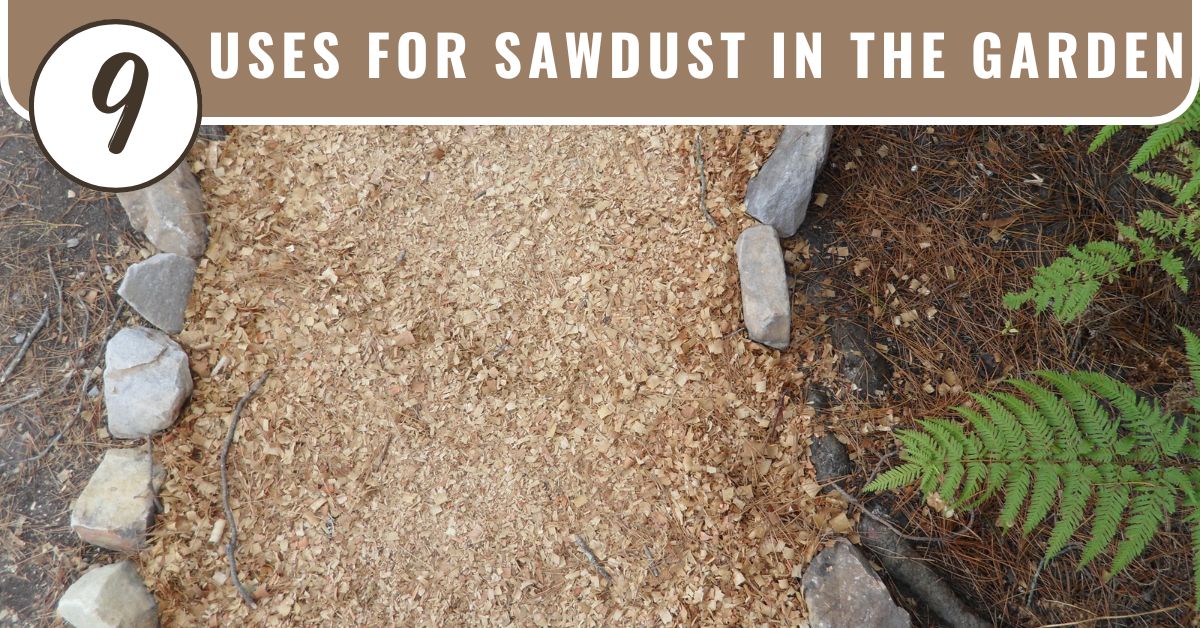
Practical Uses for Sawdust in the Garden
Most of the time, sawdust gets a bad rap because many gardeners say that it steals nitrogen from your soil. But it doesn’t have to be like that!
When used properly, sawdust is an amazing natural material to use in the vegetable garden. And it is a good way to recycle something that would otherwise be thrown out.
That being said, there are many practical and valuable uses for sawdust in the garden.
So let’s get right into it!
Disclaimer: For the purposes of this article, the word “sawdust” includes wood shavings as well. Therefore, any uses for sawdust mentioned are also uses for wood shavings in the garden.
Products
To buy high-quality garden seeds, check out Burpee.
For a wide selection of perennial garden plants, check out Nature Hills Nursery.
For gardening equipment, check out Bootstrap Farmer.
Why Use Sawdust in the Garden?
Sawdust is a very valuable addition to your backyard garden. It has many uses that can help you to get healthier plants and a better harvest.
Here’s what makes sawdust so great and why you should use sawdust in the garden:
- It’s Biodegradable: Sawdust is a natural material that is completely biodegradable. That means that it decomposes into nutrients for your plants to use. Any material that is biodegradable should be used in the garden to reduce waste.
- It’s Widely Available: Sawdust is available everywhere and is often given away to anyone who takes it. It’s a byproduct of milling and woodworking industries, which are often present in most cities.
- It’s FREE: Because of the nature of sawdust being a byproduct, it is often given away for free to anyone who wants to deal with it. Check with local milling and woodworking businesses to see if they will give you some free sawdust.
Beneficial Properties of Sawdust
- Nutrient Retention: Sawdust can help your soil hold onto nutrients by releasing them slowly as it decomposes. This will reduce nutrient run-off, which depletes your soil of nutrients.
- Moisture Conservation: Acting as a moisture barrier, sawdust reduces evaporation. This means soil stays moist longer, meaning you don’t have to water as often during dry periods.
- Weed Suppression: When applied as a surface layer, sawdust blocks out sunlight from reaching weed seeds, which stops their growth. This natural weed barrier reduces time you spend weeding, while improving soil health as it breaks down.
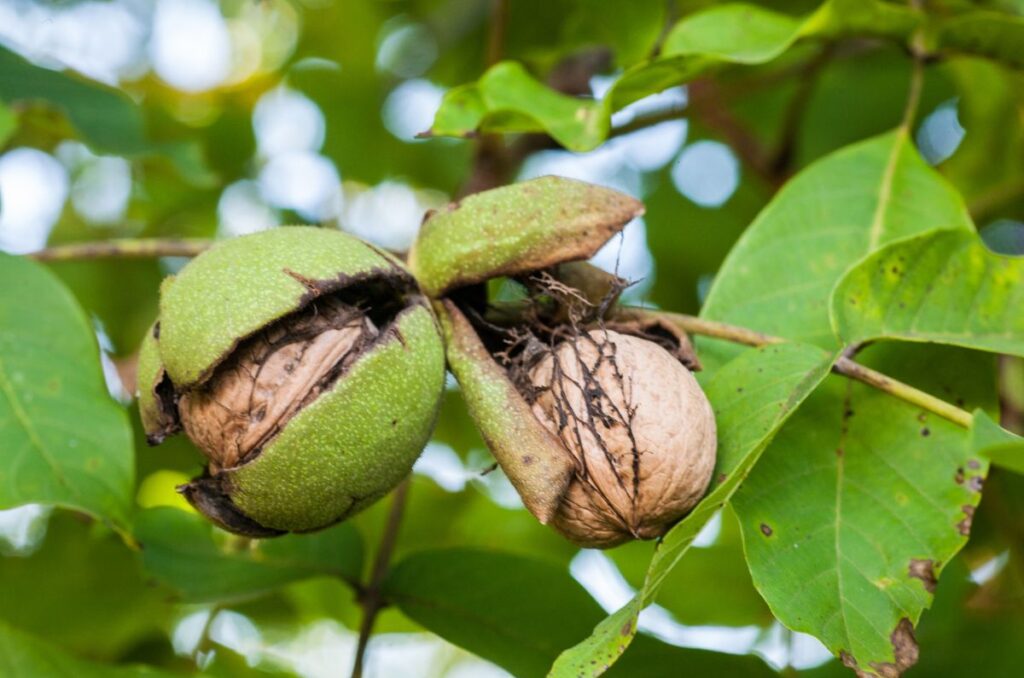
What Sawdust is Bad for Plants?
There are different types of sawdust available, and not all of them are suitable for use in the garden. So it’s important that we go over these before we get into the uses for sawdust in the garden.
Here are some types of sawdust that are not suitable for use in the garden.
- Pressure-Treated: Any sawdust that comes from pressure-treated wood is not good for your plants. This is because pressure-treated wood is treated with harmful chemicals that will leach into your soil. This will kill the soil microbiome and, eventually, your plants. Learn more: Heat-Treated vs. Pressure-Treated Lumber.
- Toxic Plants: Many plant species contain natural chemicals that inhibit the growth of other plants. These chemicals are not tolerated by most vegetable crops, and they will die from it in high concentrations. Plants with these chemicals include black walnut and eucalyptus.
Instead of these, opt for sawdust from heat-treated wood. Heat-treated wood is wood that is treated only with heat, no harsh chemicals. This makes it safe for your vegetable garden.
Additionally, make sure you are not using sawdust from black walnut or eucalyptus trees, as these can inhibit the growth of certain vegetables. Instead, choose sawdust from trees like pine, spruce cedar, birch, and others.
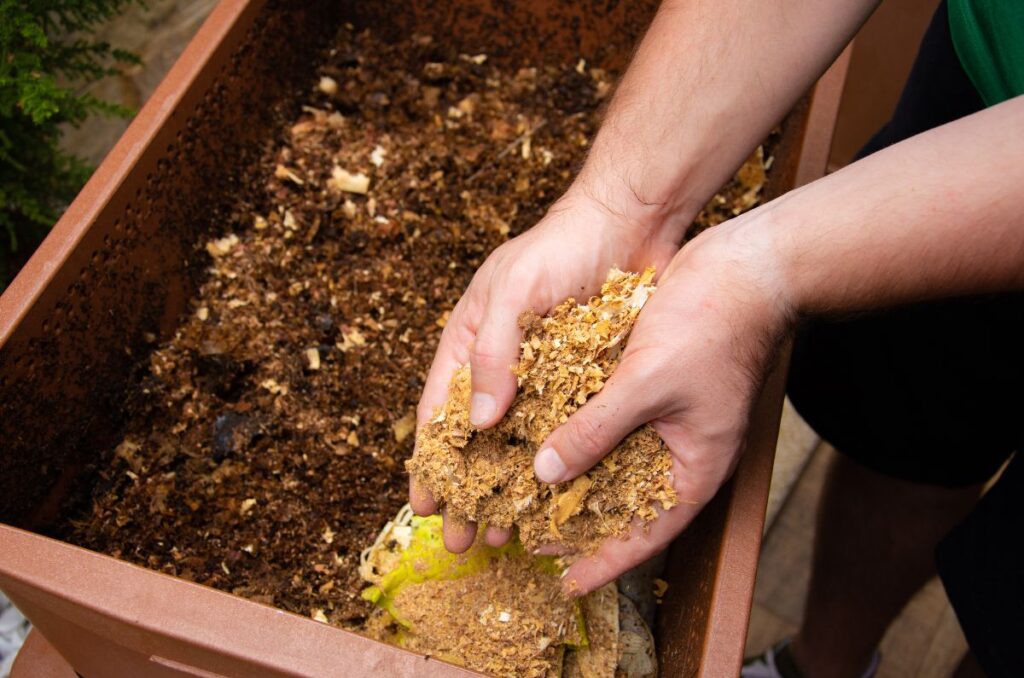
1. Using Sawdust for Compost
Healthy compost piles need 2 main nutrients to decompose properly: carbon and nitrogen. Nitrogen comes from fresh, green plant material, while carbon comes from old, dry, and brown organic material.
Nitrogen materials are very easy to come by during the gardening season, especially considering how many plants we grow. But it also comes from food scraps, coffee grounds, manure, and grass clippings, which are all widely available in most gardens.
Carbon, on the other hand, is not so easy to come by. This is because we often don’t let plants completely dry out before composting them. And unless you live in a cold climate with lots of deciduous trees, there are very few carbon-rich sources.
This is where sawdust comes in. Sawdust is rich in carbon, meaning it can act as a natural carbon-rich material for your compost pile. This means that you can add sawdust to compost to create a healthy pile.
When mixed with nitrogen-rich materials, sawdust in compost is perfect for nourishing your vegetable garden.
Additionally, because sawdust is so fluffy and aerated, it can help to aerate your compost pile. This will help to reduce the amount of times that you have to manually aerate the pile.
Steps to Incorporate Sawdust into Compost:
- Mix 1 part sawdust to 1 part green material. This ensures the correct ratio of carbon to nitrogen, which is optimal for decomposition.
- Ensure the pile is well-aerated. Depending on the grain size of the sawdust, it can become compacted easily. Larger grain sizes of sawdust allow for more airflow, while smaller grain sizes prevent airflow.
- Turn the pile regularly to speed up decomposition. Sometimes, the outer edges of the compost pile do not decompose as quickly. Moving the edges to the centre can speed up the process.
For a full overview, check out our composting guide.
How long does it take to compost sawdust? Generally, sawdust takes about 6-12 months to fully decompose in the compost pile.
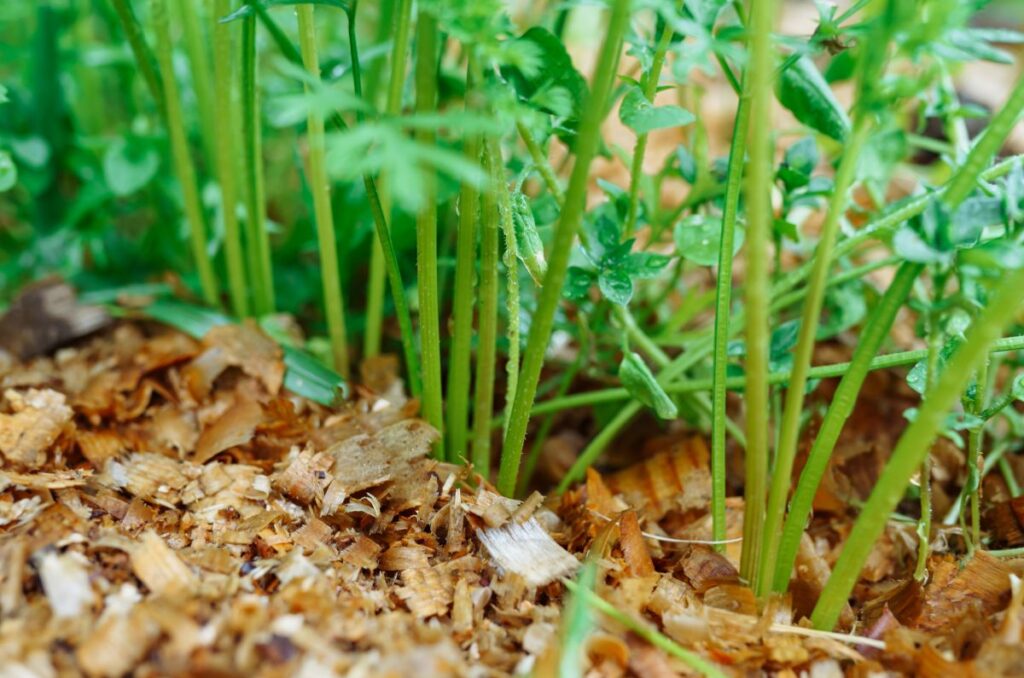
2. Using Sawdust as Mulch
Organic mulch is a layer of organic matter that is spread on top of the soil surface. It helps to suppress weeds, retain moisture, and block out sunlight
Sawdust garden mulch can conserve moisture, regulate soil temperature, and prevent weeds. However, it’s crucial to use sawdust mulch correctly to avoid nitrogen deficiency in plants.
Sawdust is broken down by microorganisms. The microorganisms need nitrogen to break it down. The only place for the microbes to get nitrogen is wherever they are, which is the surrounding soil area.
This means that they will pull nitrogen from the soil to decompose the sawdust. This shouldn’t be too much of a problem if you use sawdust the right way.
It should not be mixed with your soil, it should just be used as a top layer. If you just leave it on the top, it won’t mix too much with the soil. But even if it does mix a little bit, it won’t cause that much harm.
If you are really concerned about it, or maybe your soil is low in nitrogen, consider mixing the sawdust mulch with a green mulch, like grass clippings.
For me, I generally avoid using sawdust mulch for my vegetables. Instead I use sawdust mulch for fruit trees and ornamentals, and other woody perennial plants.
I especially like to use sawdust mulch for raspberries. Every fall when I cut back my raspberries, I pile on a few inches of sawdust and it keeps them nice and warm during the winter.
Best Practices for Mulching with Sawdust:
- Apply a 2-3 inch layer around plants.
- Leave a couple of inches around the stems of your plants. If you put the sawdust mulch too close to the stem, it may rot and kill the plant.
- Supplement with a nitrogen-rich organic fertilizer if you notice signs of deficiency.
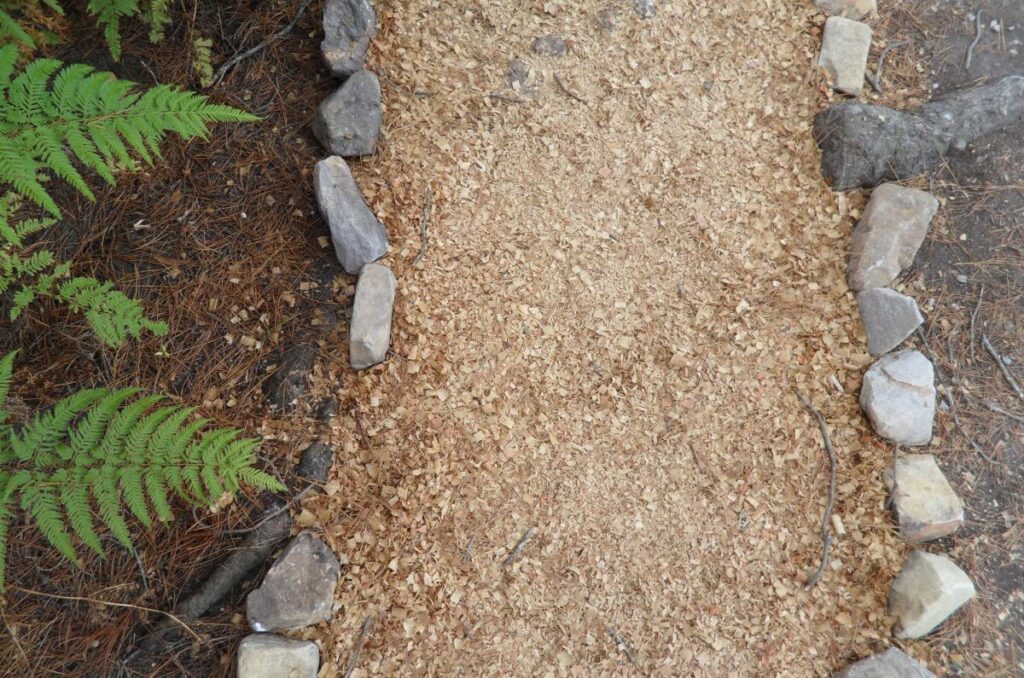
3. Sawdust Garden Path
Sawdust is also perfect for creating natural pathways in your garden. It’s soft to walk on, absorbs water, is biodegradable, and suppresses weeds.
It’s also great if you have a TON of sawdust that you need to use quickly. Maybe you got a huge pile dropped off by a local wood miller and you have to put it somewhere. In that case, use it for your pathways.
You can also use sawdust from black walnut trees in pathways because it’s not directly interfering with your garden. In fact, this will actually suppress weed growth even more because of the properties of juglone.
Sawdust also makes a great winter path because it can provide some traction on icy areas. It makes a great alternative to road salts, which can harm nearby plants.
But that being said, it may become a problem if there is a lot of foot traffic. Sawdust can be moved around easily, and lots of walking can make this worse.
So don’t use sawdust for the busiest pathway in your garden, but for one on the side that you still use but not that often.
If you want to use sawdust for a busy path, consider mixing it with woodchips to increase its lifespan.
How to Make a Sawdust Path
- Apply sawdust as a thick layer for your paths, because it will get compacted over time.
- Press it down with your feet and water it in to get it to stick to the ground.
- If you are worried about the sawdust blowing away, you can put it on the bottom of the paths and cover it with woodchips or another large organic material.
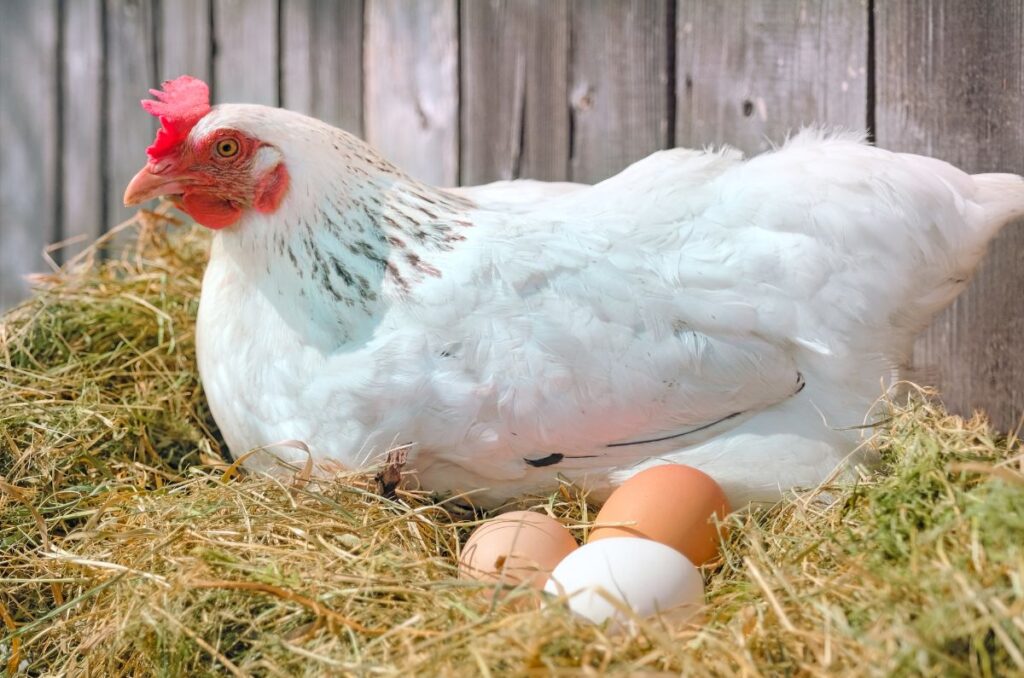
4. Sawdust for Animal Bedding
In this case, you are going to want to use wood shavings instead. Sawdust is too, well, dusty for most small animals and can cause some health problems if they inhale it. Therefore, don’t use sawdust as bedding for your small animals.
Instead, use wood shavings, which are similar to sawdust but have a larger particle size, meaning there is a much lower chance of the animals inhaling it.
That being said, many small animals, such as guinea pigs, hamsters, rabbits, chickens, and ducks, require bedding. Some people like to buy synthetic material from the store for their poor animals, but that doesn’t mean that you have to.
Anybody who has chickens, ducks, or rabbits in their vegetable garden will know that almost nothing goes to waste. I recommend mixing wood shavings with another bedding material, like chopped straw, and then watch your animals thrive.
Once they start pooping everywhere, then you already have a perfect compost mix created, with the right amount of browns (sawdust) and greens (their manure).
You can then just gather all the bedding and either lay it down as a mulch in the garden or finish composting it in your compost pile.
Tips for Sawdust Animal Bedding
- Use wood shavings instead of sawdust. Sawdust can be harmful for small animals when they breath it in, while wood shavings are big enough that this isn’t a problem.
- Mix the wood shavings with another bedding material, such as chopped straw.
- After the animals have soiled the bedding, you can take it out and put it straight into your garden as a mulch.
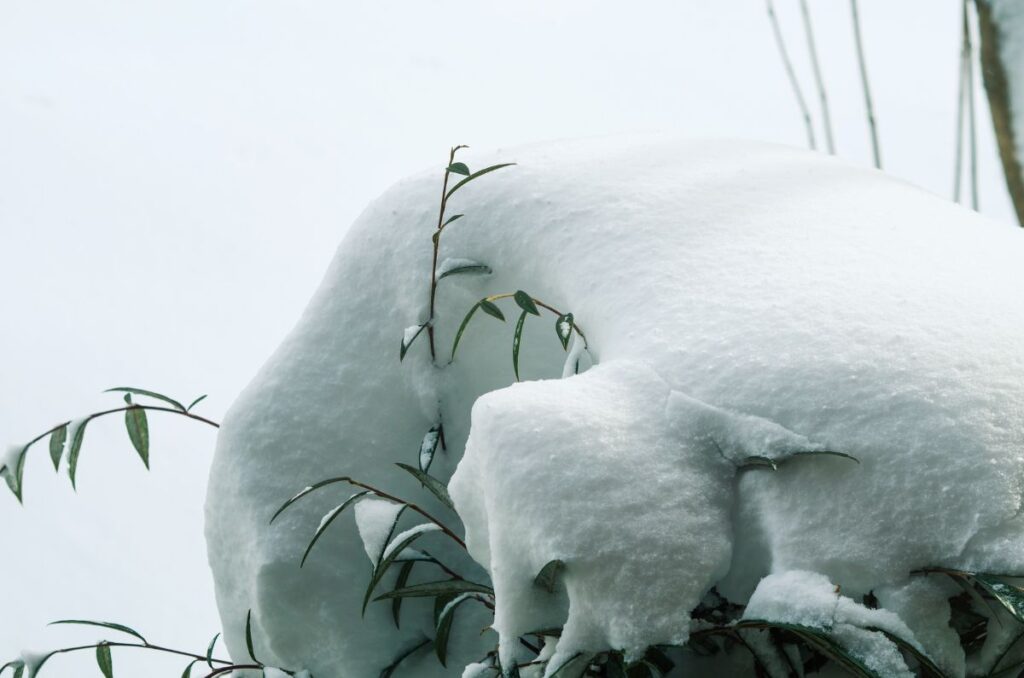
5. Sawdust for Winter Insulation
Now, I’m not talking about insulating your house with sawdust. I am talking about insulating your overwintering plants with sawdust. With the abundance of sawdust at the end of the season, this is a perfect time to use it.
I typically have a few overwintering plants in my garden, like kale and some perennial flowers. But they don’t always survive without some sort of protection. So we can use sawdust to insulate them from the cold.
To do this, fill a large black garbage bag with enough sawdust to be packed against the plant. Then place the bag over the overwintering plants, tie it down, and then just leave it.
This will help to keep in some heat to warm up the plant. And the reason for the black garbage bag is that it will absorb more sunlight and warm up your plants even more.
Additionally, cover the soil around the plants with sawdust, as this will help to insulate the roots over the winter.
Tips for Insulating Plants with Sawdust
- Use enough sawdust that it will be packed against the plants. If you don’t use enough, the sawdust will just fall to the bottom and the top of the plant will be shivering.
- Make sure the bag is tight and tied down. You can either tie it to the plant or stake it in the ground.
- Remove the bag of sawdust in the spring to prevent excess moisture buildup when the temperatures rise.
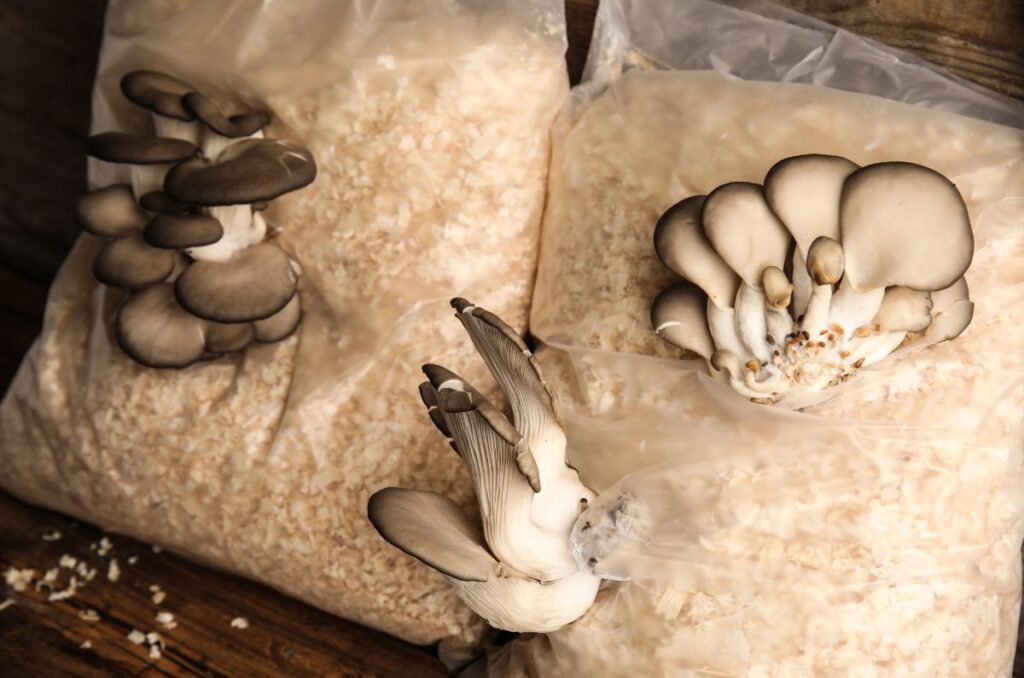
6. Using Sawdust to Grow Mushrooms
Sawdust can also be used to grow mushrooms indoors and outdoors. Most mushrooms prefer to grow in a substrate that is mostly carbon, as it mimics their natural habitat.
If the substrate is mostly nitrogen, the mycelium will decompose it so quickly and you will have to constantly add more substrate.
But because sawdust is woody and carbon-rich, it provides a stable substrate that will feed the fungi for longer. Wood shavings are especially good for this because they will take even less time to break down.
Tips for Using Sawdust to Grow Mushrooms
- Prepare a mushroom bed by clearing some soil and adding half of your sawdust substrate.
- You can also mix in other substrates, like straw, hay, or wood chips.
- Break up the mushroom spawn on top of the substrate.
- Add the rest of the sawdust substrate and make sure to thoroughly water every layer. This will help the sawdust stay down and it will help the fungi to colonize the substrate.
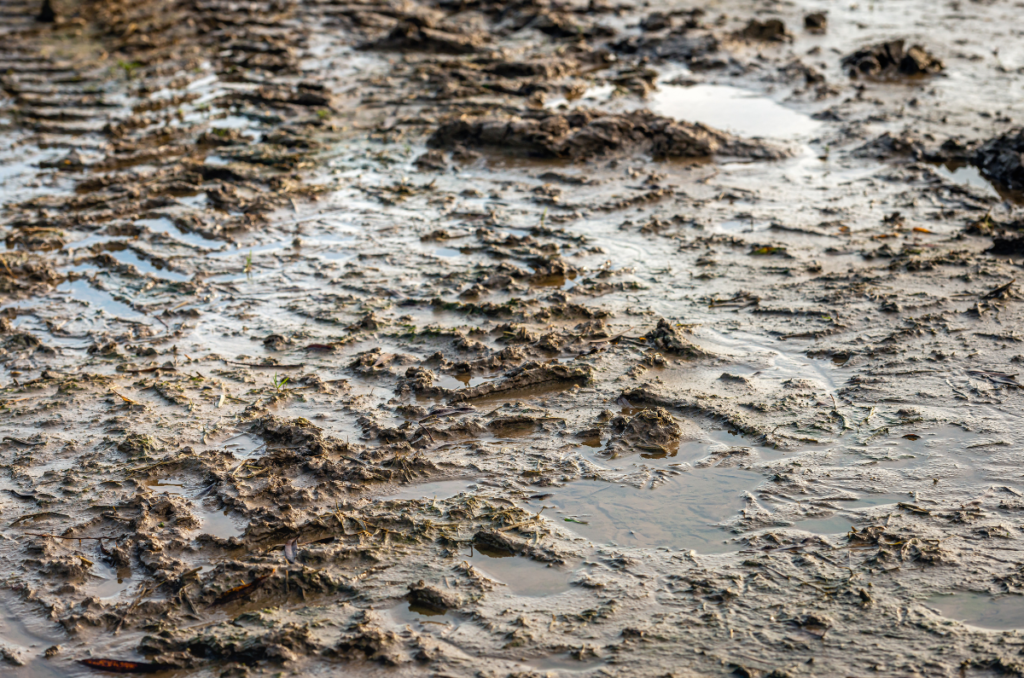
7. Sawdust as a Drying Agent for Wet Areas
Because of how dry sawdust is, it can be used to soak up water from wet areas. Sawdust is almost like coconut coir in this sense, where it can soak up and hold lots of water.
We all have those spots in our gardens that are just always wet and muddy, and we can’t really walk there because then our shoes get dirty. I know, I have them too.
But we can fix this by sprinkling some sawdust on top, letting it soak up the water, and then raking it all up.
Best Tips for Drying Wet Areas with Sawdust
- Find an area in your garden that routinely pools with water, especially when it rains.
- Sprinkle a good amount of sawdust over the area.
- Let the sawdust sit there for about an hour to soak up all the water.
- Then collect all the wet sawdust and use it elsewhere in your garden. It can now be used as mulch or it can be composted.
The sawdust is not meant to fix the pooling water problem. If you have a drainage problem or something is wrong with your soil, that needs to be addressed first. Consider using raised beds to improve drainage, or fix your clay soil.
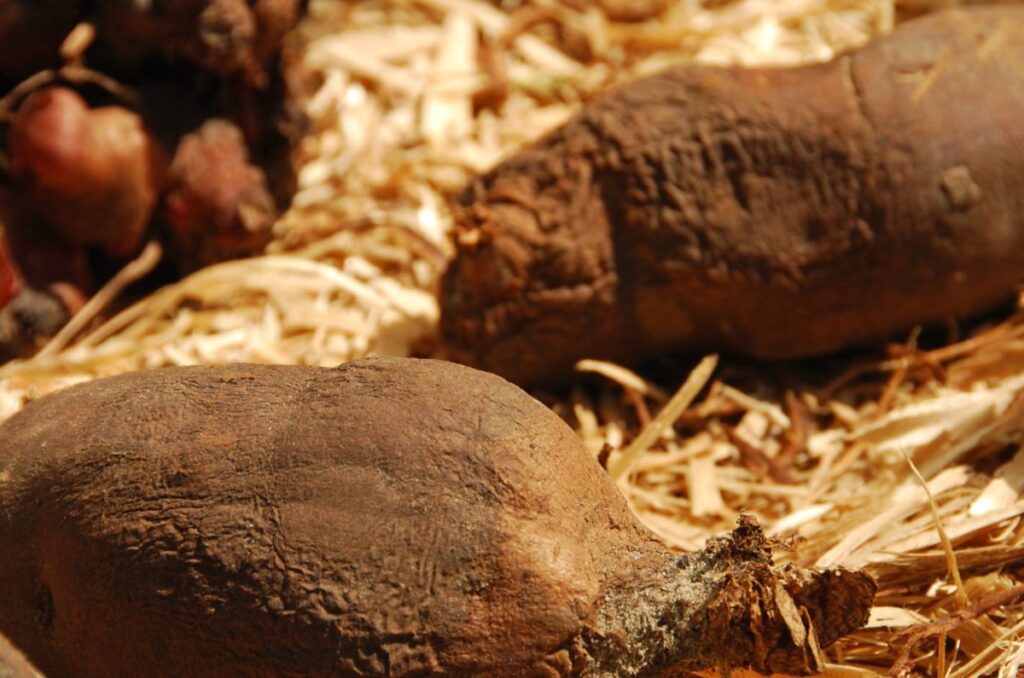
8. Storing Vegetables in Sawdust
Sawdust is an excellent medium for preserving root vegetables like carrots, beets, radishes, and turnips. These vegetables need a consistent moisture level to stay crunchy and fresh. Sawdust gives them exactly that.
These vegetables easily lose moisture when you keep them in the fridge and they become bendy and bitter. When you use sawdust, the root vegetables can easily store for months when done right.
Tips for Storing Vegetables in Sawdust
- Use a large container where the vegetables will have lots of room to breathe.
- Add a 2 inch layer of moistened sawdust on the bottom of the container.
- Then add your vegetables and make sure to space them out evenly.
- Add another layer of moistened sawdust and repeat until all your vegetables are inside.
- Make sure to cover the container with a lid to keep it moist. You shouldn’t have to constantly spray water to keep the sawdust moist as long as you only open it when you are taking out some veggies.
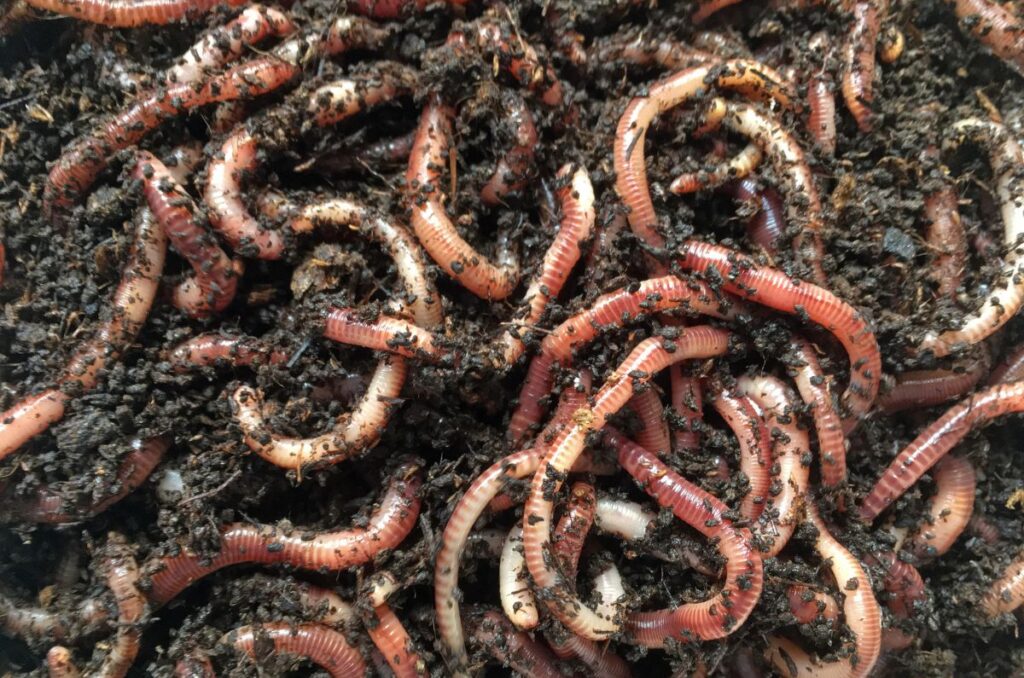
9. Sawdust for Worm Bedding
Worm farming, also known as vermicomposting, is becoming more popular among backyard gardeners because it helps us to reduce large amounts of waste. But worms need some sort of bedding to live and move around in.
Some people use newspapers or cardboard, but I like to use a mix of coconut coir and sawdust. This creates a soft and moist bedding that the worms will eventually turn into worm castings.
Try not to use too much sawdust, as this can also be a problem for worms. Sawdust can be compacted very easily, reducing airflow in the worm bin.
This is why I use a mix of coco coir and sawdust, because coco coir naturally allows for more aeration. This will help your worms stay healthy.
Check out our full vermicomposting guide to learn more.
Can Sawdust be Mixed with Soil?
While a little bit of sawdust mixed into the soil won’t cause too much harm, mixing in large amounts of sawdust can deplete nitrogen in the soil.
This is because sawdust is a carbon-rich material that needs nitrogen to break down properly. So the microorganisms in your soil will pull nitrogen from the soil to break down the carbon material.
This is not a big problem in the grand scheme of things, because the nitrogen will eventually be released. But it can be a problem if you have plants that are actively growing in your garden. Actively growing plants need lots of nitrogen to produce those big green leaves.
So I wouldn’t worry too much about it, but I also wouldn’t mix large amounts of sawdust directly into the soil. You can mulch with it or compost it, but I wouldn’t mix it with the soil.
Common Mistakes When Using Sawdust in the Garden
Here are some things that many gardeners get wrong when using sawdust in their garden:
- Using too much: Sawdust should be used with nitrogen-rich materials to offset the nitrogen loss of the soil. This helps your plants get all the nutrients they need for proper growth.
- Using the wrong sawdust: Sawdust from pressure-treated wood and from trees containing toxic chemicals can inhibit the growth of common vegetable crops. Use sawdust that does not fall into these categories.
Frequently Asked Questions
Yes, sawdust can be used in a hugelkultur raised garden bed. Layer your sawdust at the bottom of the raised bed with the large pieces of wood. It will decompose over time and provide nutrients for your plants.
Yes, sawdust can be used at the bottom of a container to fill it up easier. Sometimes potting mix can be expensive, so using sawdust can save you some money.
Sawdust, especially from coniferous trees, has a lower pH and is acidic in nature. Although, I am not convinced that this will acidify your soil over time. It may lower it very slightly, but it probably won’t cause too much harm.
Sawdust will most likely take at least 6 to 12 months to fully decompose into usable nutrients for your plants.
Yes, sawdust is good for composting toilets because it can absorb moisture and reduce odours. Additionally, it acts as the carbon-rich material for the nitrogen-rich human waste.
Even More Gardening Ideas
Here are a few more posts to get the ball rolling in your garden!
- How to Start a Vegetable Garden from Scratch
- How to Make Biochar as a Soil Amendment
- Vegetable Garden Watering Tips and Techniques
If you liked this article, make sure to share it with your friends and family members who are also looking to sharpen their gardening skills. Also, consider signing up for our email newsletter; don’t worry, we won’t send you spam, just fresh gardening ideas every week!
If you want to learn more about vegetable gardening, check out The Real Gardener on LinkedIn, YouTube, and Pinterest.
Pin this post for later:
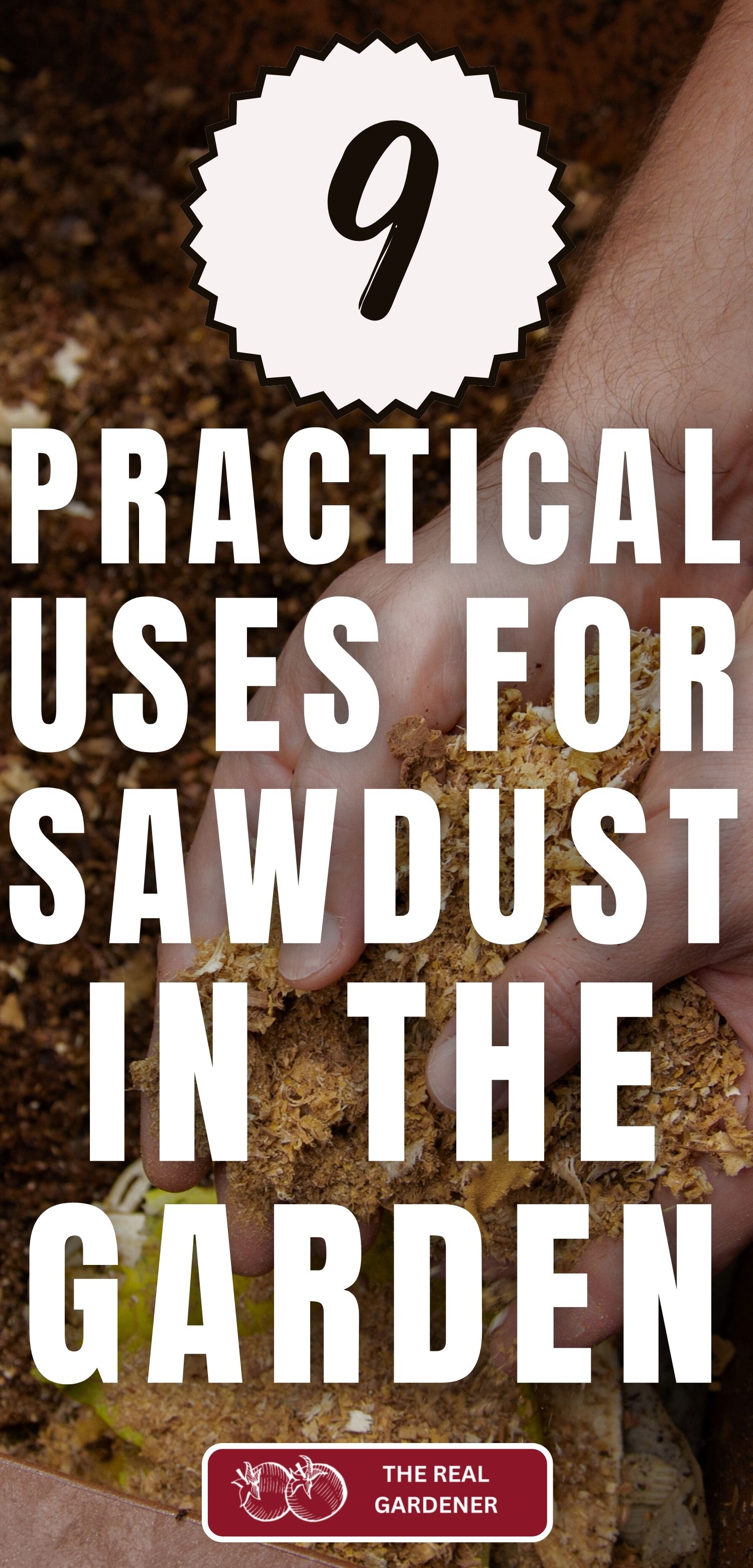
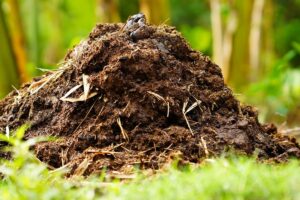
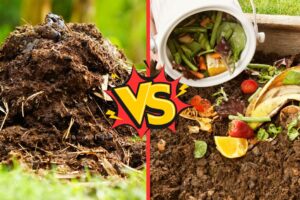
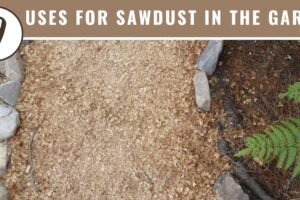
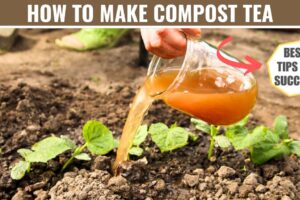
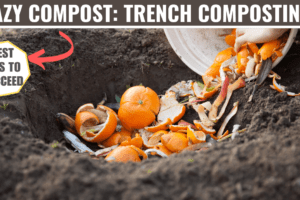
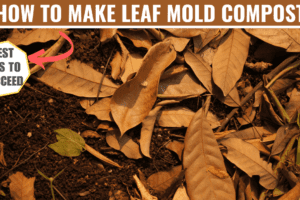
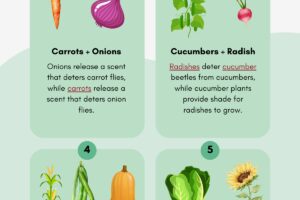
Leave a Reply